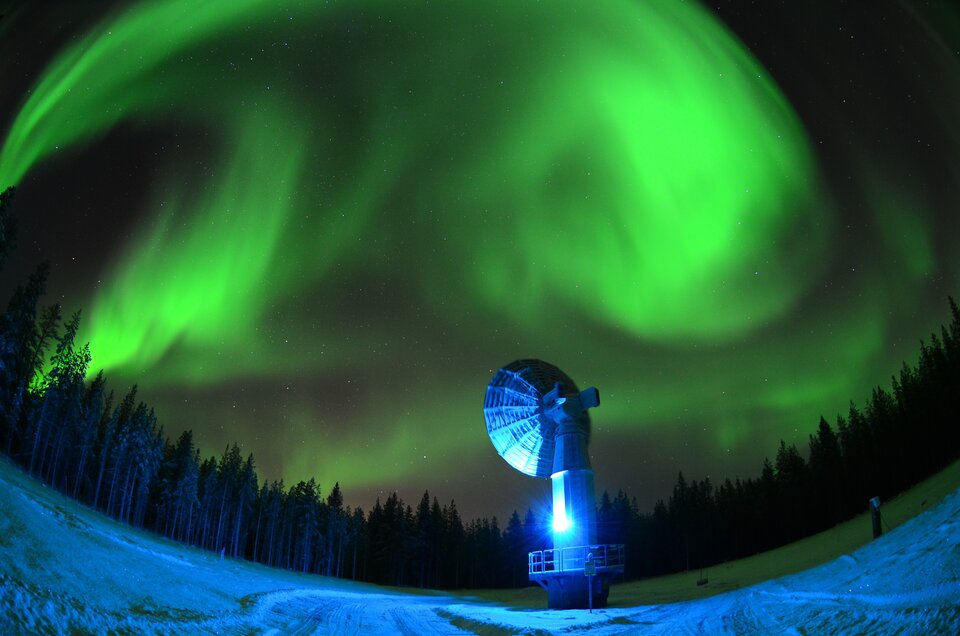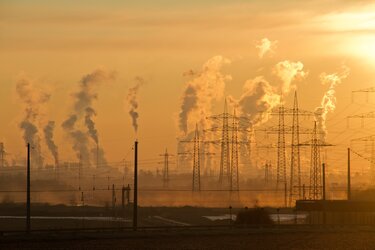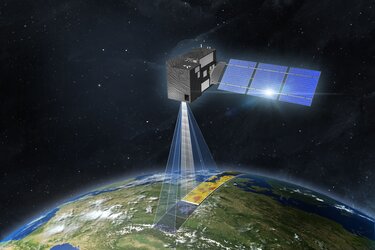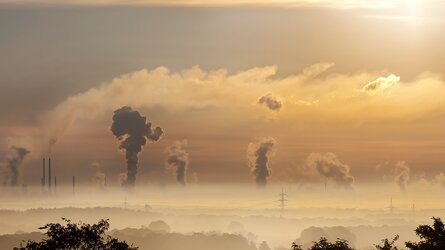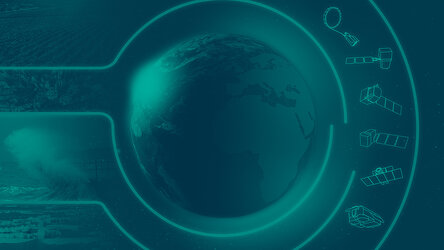Snowy Lapland and the white balloon
At this time of the year, the mention of Lapland conjures up visions of Santa getting his gift-laden sleigh and nine reindeer ready to take to the skies for the most important deliveries of all. However, the skies of Lapland have witnessed something rather different recently – a big white balloon, which may not provide the immediate gratification of a much-wanted Christmas present, but nonetheless plays a role in helping to safeguard our children’s future.
The balloon in question was launched to measure the amount of carbon dioxide and methane in the atmosphere and is part of ESA’s preparatory work for the new Copernicus Carbon Dioxide Monitoring satellite mission.

Dr Hannakaisa Lindqvist, Head of the Greenhouse Gases and Satellite Methods Group at the Finnish Meteorological Institute (FMI), explained, “What a sight it was. From the middle of the thick boreal forest on a cold winter’s day, we watched the balloon rise from the snowy ground and expand against the cloudless blue sky.
“Attached to the hydrogen-filled white balloon was a box that held an important instrument called AirCore.”
Expanding to its limits, the balloon eventually burst when it reached more than 30 km above the forest.
Then, as the balloon pieces started falling, a parachute opened and brought AirCore slowly back to the ground.
On its journey back through the atmosphere, AirCore collected measurements of molecules in the air that flowed through the instrument’s tubing – souvenirs from different heights.
To prevent the molecules from mixing, the instrument had to be collected as fast as possible after landing.

The institute’s researchers have developed excellent tools for forecasting the landing, which help stop it from ending up in open water, towns or other difficult places.
The whole point of this elaborate experiment is to increase knowledge of the composition of the atmosphere at different altitudes over the Arctic – in particular, to understand the vertical distribution of greenhouse gases.
“And, more specifically, the point is to evaluate the feasibility of carbon dioxide observations over snow.
“Contrary to our everyday experience, snow is very dark at the wavelengths that greenhouse-gas measuring satellites observe – which is where the new Copernicus Carbon Dioxide Monitoring mission comes in,” added Dr Rigel Kivi, the Principal Investigator of the AirCore observations at the FMI Space and Earth Observation Centre in Sodankylä.

The Copernicus Anthropogenic Carbon Dioxide Monitoring mission, or CO2M for short, is one of six Copernicus Sentinel Expansion missions that ESA is developing on behalf of the EU.
It is planned as a two-satellite mission, with the option of a third satellite.
They will each carry a near-infrared and shortwave-infrared spectrometer to measure atmospheric carbon dioxide at high spatial resolution.
These measurements will be used by the new CO2M Monitoring and Verification Support Capacity, which the European Centre for Medium-Range Weather Forecasts is developing, and which will eventually reduce uncertainties in estimates of emissions of carbon dioxide from the combustion of fossil fuel at local, national, and regional scales.
This will provide the EU with a unique and independent source of information to assess the effectiveness of policy measures, and to track their impact towards decarbonising Europe and meeting national emission reduction targets.

Moreover, nations throughout the world will be able to assess and compare with transparency how they are meeting their targets.
On a technical level, at high latitudes, the mission will have to make observations when there is little sunlight and over snow surfaces, but still excel in accuracy and precision.
Yasjka Meijer, ESA’s CO2M mission scientist, said, “The recent balloon experiment supports research into improving CO2M’s measurements over the Arctic. This is especially relevant for measuring methane emissions from the gas industry and from thawing permafrost in northern latitudes.”
While the researchers analyse the data from this particular balloon flight, we are assured that the sight of a balloon taking to the skies over Lapland hasn’t deterred Santa from his own upcoming mission.















 Germany
Germany
 Austria
Austria
 Belgium
Belgium
 Denmark
Denmark
 Spain
Spain
 Estonia
Estonia
 Finland
Finland
 France
France
 Greece
Greece
 Hungary
Hungary
 Ireland
Ireland
 Italy
Italy
 Luxembourg
Luxembourg
 Norway
Norway
 The Netherlands
The Netherlands
 Poland
Poland
 Portugal
Portugal
 Czechia
Czechia
 Romania
Romania
 United Kingdom
United Kingdom
 Slovenia
Slovenia
 Sweden
Sweden
 Switzerland
Switzerland




























